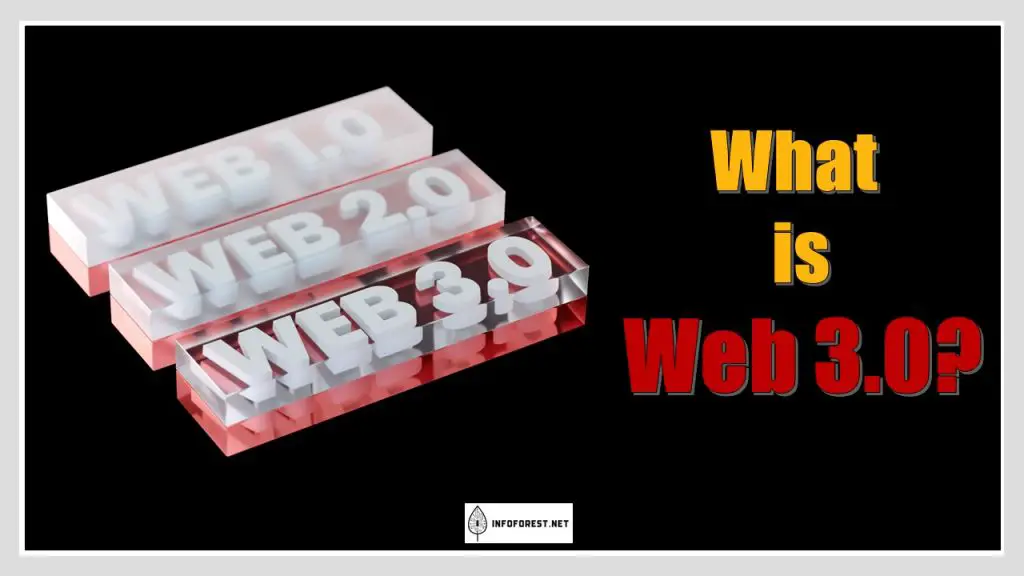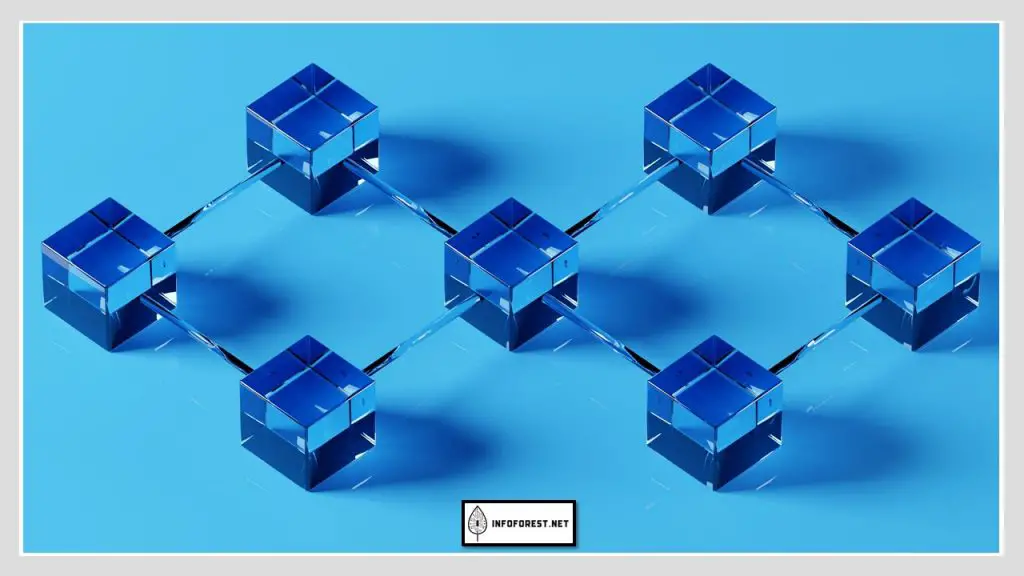
Web 3.0 is a term used to describe the future direction of the internet, where the web will become more intelligent, decentralized, and user-centric. It is characterized by advancements in artificial intelligence, semantic web technologies, and blockchain technology, among others. The aim of Web 3.0 is to create a more connected and intuitive web, where users have greater control over their personal data, and interactions are more human-like. The web will be able to understand the meaning of the data it stores and processes, allowing for more personalized and efficient experiences. Web 3.0 is still in its early stages of development, but it holds great potential to revolutionize the way we interact with the internet and each other online.
what is Web 1.0?
Web 1.0 refers to the early stage of the World Wide Web, which was primarily a static and read-only version of the internet. It was primarily used as a tool for delivering information to users through websites that consisted of simple HTML pages. The focus of Web 1.0 was on providing a platform for sharing and accessing information, but it lacked interactivity and dynamic content. Users could only view information, but they could not interact with it or contribute their own content. Some of the prominent examples of Web 1.0 websites include encyclopedias, news portals, and search engines.
what is Web 2.0?
Web 2.0 refers to the next stage of the World Wide Web, which emerged in the late 1990s and early 2000s. Unlike Web 1.0, which was primarily focused on delivering information, Web 2.0 was characterized by increased interactivity, user-generated content, and social networking. The introduction of new technologies, such as blogs, wikis, social media platforms, and cloud computing, enabled users to participate in the creation and sharing of content online. Web 2.0 also emphasized the importance of user experience, encouraging the development of more intuitive and user-friendly websites. Some of the prominent examples of Web 2.0 include Facebook, YouTube, Wikipedia, and Twitter.

what is Web 3.0?
Web 3.0 is a term used to describe the future direction of the internet, where the web will become more intelligent, decentralized, and user-centric. It is characterized by several technological advancements, including:
- Artificial intelligence (AI): Web 3.0 aims to incorporate AI technologies to provide users with more personalized and efficient experiences. AI technologies will enable the web to understand and interpret the meaning of the data it stores and processes, allowing for more accurate and relevant information to be presented to users.
- Semantic web technologies: The semantic web is a vision for the future of the web where information is represented in a way that allows machines to understand and interpret the meaning of the data. This will allow for more accurate and meaningful information to be presented to users, as well as the ability for machines to reason about the data and make inferences.
- Decentralized systems: Web 3.0 aims to move away from a centralized web, where a few large companies control the majority of the data and interactions, to a decentralized web where users have greater control over their personal data and interactions. This is being enabled by the development of blockchain technology and decentralized systems, which allow for secure and transparent interactions on the web.
- Interconnectivity: Web 3.0 aims to create a more interconnected web, where data and information can be easily shared and accessed across different platforms and applications. This will enable a more seamless and integrated user experience, as well as the ability for the web to better understand the relationships between different pieces of information.
The vision for Web 3.0 is a web where users have greater control over their personal data, interactions are more human-like, and the web is more interconnected and able to understand the meaning of the data it stores and processes. Web 3.0 is still in its early stages of development, but it holds great potential to revolutionize the way we interact with the internet and each other online.
We also invite you not to miss our other popular articles such as:
Difference Between Rose Gold and Yellow Gold– ChatGPT–Difference between left and right Twix–Difference Between Eastern Time Zone and Central Time Zone–Difference Between Capitalism and Communism– Difference Between EST and EDT–How many weeks in a Year– Difference Between Evening and Afternoon – Democrat vs Republican
Web 2.0 vs Web 3.0
Web 2.0 and Web 3.0 are two different stages of the World Wide Web. The main differences between the two are:
Web 2.0:
- Characterized by increased interactivity, user-generated content, and social networking
- Focus on user experience and the development of more intuitive and user-friendly websites
- Emphasis on collaboration, communication, and sharing of information and content
- Centralized control of the web, with a few large companies controlling the majority of the data and interactions
Web 3.0:
- Characterized by advancements in artificial intelligence, semantic web technologies, and decentralized systems
- Focus on a more intelligent, decentralized, and user-centric web
- Emphasis on personalization and efficiency, enabled by the ability of the web to understand and interpret the meaning of data
- The decentralized control of the web, with users having greater control over their personal data and interactions
In summary, while Web 2.0 was focused on enabling more interactive and social experiences on the web, Web 3.0 aims to take this a step further by creating a more intelligent and decentralized web that is more tailored to the needs and preferences of individual users.

Features of Web 3.0
The features of Web 3.0 are still being developed and may evolve over time, but some of the key features being discussed include:
- Artificial intelligence: Web 3.0 aims to incorporate artificial intelligence technologies to provide users with more personalized and efficient experiences. AI technologies will enable the web to understand and interpret the meaning of the data it stores and processes, allowing for more accurate and relevant information to be presented to users.
- Decentralized systems: Web 3.0 aims to move away from a centralized web, where a few large companies control the majority of the data and interactions, to a decentralized web where users have greater control over their personal data and interactions. This is being enabled by the development of blockchain technology and decentralized systems, which allow for secure and transparent interactions on the web.
- Interconnectivity: Web 3.0 aims to create a more interconnected web, where data and information can be easily shared and accessed across different platforms and applications. This will enable a more seamless and integrated user experience, as well as the ability for the web to better understand the relationships between different pieces of information.
- Semantic web technologies: The semantic web is a vision for the future of the web where information is represented in a way that allows machines to understand and interpret the meaning of the data. This will allow for more accurate and meaningful information to be presented to users, as well as the ability for machines to reason about the data and make inferences.
- Privacy and security: With the increasing concern over privacy and security on the web, Web 3.0 aims to provide users with greater control over their personal data and greater transparency in the way their data is used. Decentralized systems and blockchain technologies will play a key role in enabling this.
These are some of the key features being discussed in the context of Web 3.0, but the development of the web is an ongoing process, and the exact features of Web 3.0 may change as new technologies and innovations emerge.
What language does Web3 use?
There is no specific programming language that is associated exclusively with Web 3.0, as it is still in its early stages of development and is an umbrella term for various technologies and innovations. However, some of the key technologies being developed and used for Web 3.0 include:
- Solidity: A programming language used for writing smart contracts on the Ethereum blockchain, which is a key technology for enabling decentralized systems.
- JavaScript: A widely used programming language that is commonly used for front-end development and is being used in the development of decentralized applications and platforms.
- Python: A popular programming language that is being used in the development of machine learning and artificial intelligence technologies, which are key components of Web 3.0.
- RDF (Resource Description Framework): A standardized data model used for representing information on the web in a way that allows machines to understand and interpret the meaning of the data.
In summary, Web 3.0 is not tied to a specific programming language, but rather a combination of technologies and innovations that aim to create a more intelligent, decentralized, and user-centric web. The programming languages used in the development of Web 3.0 technologies will likely vary depending on the specific use case and application.
Examples of Web 3.0
Some examples of Web 3.0 technologies and applications include:
- Decentralized finance (DeFi) platforms: DeFi platforms, such as Uniswap, Aave, and MakerDAO, are decentralized applications built on blockchain technology that allows for the creation and exchange of financial instruments, such as loans and investments, without the need for intermediaries.
- Decentralized identity systems: Decentralized identity systems, such as uPort and Civic, allow users to control and manage their personal identity data in a secure and decentralized way, without the need for centralized intermediaries.
- Decentralized marketplaces: Decentralized marketplaces, such as OpenBazaar and Origin Protocol, are decentralized platforms that allow for the buying and selling of goods and services without the need for intermediaries, enabling a more efficient and user-centric marketplace.
- Chatbots and virtual assistants: AI-powered chatbots and virtual assistants, such as Google Assistant and Amazon Alexa, are being developed to provide users with more personalized and efficient experiences, by enabling the web to understand and interpret the meaning of the data it stores and processes.
- Voice-activated interfaces: Voice-activated interfaces, such as Siri and Google Home, allow users to interact with the web and access information and services through voice commands, enabling a more natural and intuitive user experience.
These are just a few examples of Web 3.0 technologies and applications, and the development of the web is an ongoing process, with new innovations and technologies emerging all the time.
Most Viewed Articles
Conclusion
In conclusion, Web 3.0 is the next generation of the web, which aims to provide a more intelligent, decentralized, and user-centric web experience. Web 3.0 technologies and innovations, such as artificial intelligence, decentralized systems, and semantic web technologies, will play a key role in enabling a more efficient and personal web, where users have greater control over their personal data and interactions.
However, Web 3.0 is still in its early stages of development, and the exact features and capabilities of the web in the future will depend on the continued evolution of technology and innovation. Nevertheless, Web 3.0 has the potential to transform the web as we know it and enable a more seamless and integrated user experience, while also ensuring greater privacy and security for users.
We also invite you not to miss our other popular articles such as:
What is NFT–What is a Recession– What Is Bitcoin– What Is PayPal and How Does it Work – Kilometer vs Mile – How to get rid of hiccups What does TBH mean – What does NSFW mean – What does IG mean–What does CAP mean– What is normal blood pressure –What is the rarest blood type–Difference Between Hotel And Motel – Differences Between Chinese and Japanese and Difference Between Zip Code and Postal Code






